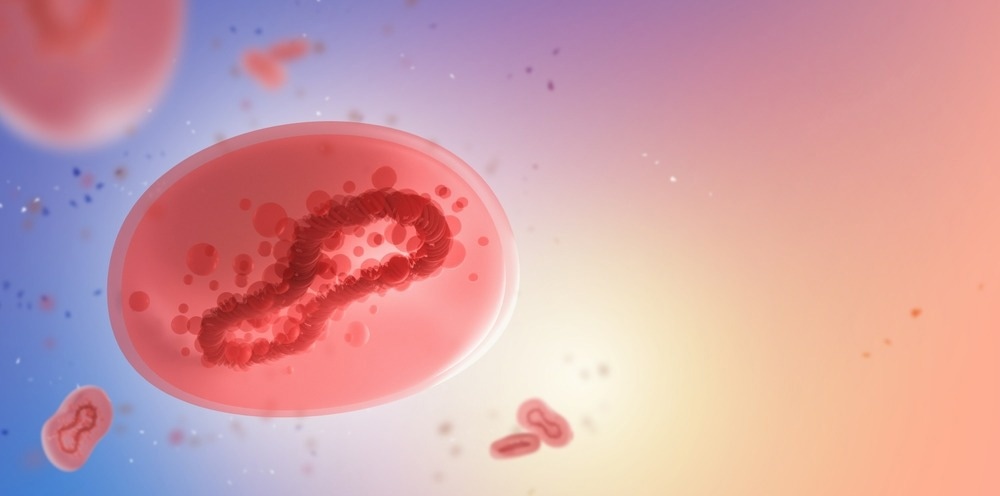Home » Health News »
Virtual screening and molecular dynamics explore potential repurposed drugs against monkeypox virus
The monkeypox virus (MPV) is an Orthopoxvirus, mainly found in Central Africa which exhibits inconsistent fatality rates. However, the MPV has been reported in several other countries, including – Singapore, the United States of America (USA), the United Kingdom (UK), and Israel.

Background
Transmission of MPV occurs by direct contact with body fluids like animal bites, respiratory droplets, prolonged face-to-face contact, or through direct contact with contaminated objects. Whether the virus is sexually transmissible remains a debatable topic.
Symptoms of monkeypox infection are fever, headaches, malaise, and rash. Vaccine against the smallpox virus is potent in preventing MPV infections. Diagnosis of monkeypox disease is done by immunohistochemistry, culture, or polymerase chain reaction (PCR). A potential drug approved by the US Food and Drug Administration (FDA) for treating MPV infection is tecovirimat.
Amongst Poxviridae, vaccinia is widely studied. Smallpox, monkeypox, and vaccinia have similar genome sizes.
About the study
A recent study published in Molecules investigated ‘targets’ in the poxvirus and identified the protein residues active in MPV, following which eight potential anti-viral drugs were proposed. ‘Targets’ were referred to after the vaccinia virus.
For this study, poxvirus sequences were obtained, following which important proteins were identified. Virtual screening was done, and the molecular dynamics (MD) were studied, following which the docking site was identified. For AlphaFold2 predicted proteins, reverse docking was done.
Molecular screening and docking were performed, and molecular dynamics were simulated. Protein stability was assessed, and MD metrics were calculated. Additionally, clustering was performed, and Ligand-Receptor interactions were classified.
Results
In general, high similarity in protein was found throughout poxvirus targets, although non-mutated premature stop codons were detected in the French isolate – that were inserted in all proteins. Due to improper sequencing in the Portugal isolate, lower sequence conservation near active site residue was observed. In the French isolate, deletions were explored away from the active site and any docking.
The proteins were mostly stable. The findings indicated an absence of significant overall changes in conformation throughout the simulation and an absence of locally drastic changes in the conformational structure that could affect the docking stability.
It was seen that the sites of deletion faced away from active sites. The findings indicated that the tested drugs were active across the different isolates; however, their sites of action were distant from the target.
The drugs rutaercarpine and NMCT were chosen for the target A48R. Both the drugs revealed hydrophobic interactions. Throughout the entire simulation, the root means square deviation (RMSD) of both drugs remained low. At the same time, NMCT formed strong hydrogen bonds with few amino acid residues. The experiment further proved the ligand stability.
The drug nilotinib was chosen for the target A50R; it demonstrated the highest binding affinity amongst all the screened drugs. The hydrophilic and hydrophobic regions of the amino acid were spatially proximal. Throughout the molecular dynamic simulation, low RMSD was demonstrated by the drug. Hydrophobic interactions between the amino acids and the carbon chain were noted. The drug nilotinib was preferred due to evidence in silico and a comparatively longer half-life.
The drug simeprevir was chosen to target D13L. The binding energy value of the drug was high. It was higher than rifampin – the model drug. The experiment revealed the formation of hydrogen bonds with the existing hydrogen bonds, which were formed by X-ray-derived rifampicin. A strong binding ability was noted, indicating that simeprevir is a more potent inhibitor.
For the target F13L, the drugs hypericin and naldemedine were chosen. The binding affinity of both these drugs was higher than tecovirimat – the control drug. Hypericin revealed a honeycomb-like structure fitting into F13L; the hydrophilic ends interacted in accordance with the protein. Hypericin had two hydrogen bonds with the neighboring amino acid residues.
Both hydrophilic and hydrophobic areas were detected in naldemedine, which was bound to the hydrophilic nitrogen group. Both drugs had consistent RMSD values and were stable in the simulation. Naldemedine revealed multiple stable hydrogen bonds and several hydrophobic interactions with F13L protein residues.
Fosdagrocorat and lixivaptan were selected for target 17L. Both drugs showed the strongest binding affinities compared to the control – TTP6171. They also demonstrated increased stability with lesser RMSD values and less fluctuation throughout the simulation. Fosdagrocorat revealed a strong hydrogen bond throughout the simulation. Aromatic rings in both drugs allow pi-stacking, further stabilizing the ligand position.
Overall ligands fitted approximately within 0.3 nm for all targets with different binding capacities. All established drugs, except mitoxantrone, had a stronger binding affinity
TTP-6171, the control for 17L had a higher RMSD value, although it showed greater stability at a later stage. However, for every 2.5 ns, its RMSD surpassed the clustering threshold.
There were eight and nine hydrophobic interactions between the target A48R –for NMCT and rutaecarpine, respectively. A50R had seven hydrophobic interactions for control mitoxantrone and ten for nilotinib. Meanwhile, the target D13L showed five for simeprevir and nine for control rifampin; FF13L had five for tecovirimat, six for hypericin, and twelve for naldemedine; whereas, for target 17L, seven hydrophobic interactions were seen for TTP6171, six for fosdagrocorat, and seven for lixivaptan. Of note, higher hydrophobic interactions were associated with lower RMSD values.
Throughout the simulation, hydrogen bonds between ligand and receptors were noted. In target A48R, a consistent hydrogen bond formed between NMCT and Asp-13 and Arg-72, whereas a transient hydrogen bond was detected in rutaecarpine. Consistent hydrogen bonds were seen in target D13L – between Gln-27 and rifampin and simeprevir.
The ligands in target A50R, F13L, and 17L overlap in hydrogen bonds with many residues. A50R revealed inconsistent hydrogen bonds, although it formed strong hydrogen bonds for Arg-8 in nilotinib and Lys-157 in mitoxantrone. F13L sowed a potential residue of Ser-135 and Arg-89, thereby binding all three drugs. For F13L, clustering revealed stable hydrogen bonds with all drug targets.
For 17L, the control drug formed hydrogen bonds with the greatest number of residues. Lixivaptan and TTP-6171 did not form any stable hydrogen bond. With Asp-258 and Gly-261, only fosdagrocorat formed stable hydrogen bonds.
Throughout the simulation, for A48R, a hydrogen bond was noticed for rutaecarpine and NMCT to Lys-105 and Asn-65. The drugs showed an affinity for Tyr-144.
Hydrophobic interactions were observed between Cys-11 and ligands in target A50R. The drug mitoxantrone at Cys-11 showed hydrogen bonding. Strong hydrogen bonding was observed in Asn-146, Lys-9, Asn-143, and Tyr-15. For target D13L, Phe-486 is an active site for rifampin with simeprevir, as well – showing hydrophobic interactions.
F13L revealed very high hydrogen bonding with tecovirimat – bonding with Asp-280. Hypericin and naldemedine did not bond with Asp-280. From the hydrogen bonding, new residues, especially Asn-312 were identified. Asn-312 formed hydrogen bonds with all drugs that were tested. However, in the most stable state, it formed hydrophobic interactions with naldemedine and hypericin. For 17L, hydrogen bonds were seen at Ser-240, Lys-243, and His-241. His-241 also interacted hydrophobically with lixivaptan and fosdagrocorat.
Molecules screened for the AlphaFold2-derived structure of protease G1L dislodged during the molecular dynamics. Other drugs that either dislodged or had unstable conformations were vitamin D and ponatinib – for A50R glecaprevir and rifaximin; cinacalcet for A48R; DB11913, DB06925, DB04727, laniquidar, baloxavir, and nilotinib – for 17L; lifitegrast for F13L; and TMC-647055, fda_1667, cepharanthine, and fda_1348 – for G1L. All the tested drugs had limited binding to G1L.
- Lam, H., Guan, J. and Mu, Y. (2022) "In Silico Repurposed Drugs against Monkeypox Virus", Molecules, 27(16), p. 5277. doi: 10.3390/molecules27165277. https://www.mdpi.com/1420-3049/27/16/5277/htm
Posted in: Medical Science News | Medical Research News | Disease/Infection News
Tags: Amino Acid, binding affinity, Body Fluids, Drugs, Fever, Food, Genome, Immunohistochemistry, Ligand, Monkeypox, Polymerase, Polymerase Chain Reaction, Protein, Protein Stability, Rash, Receptor, Respiratory, Rifampicin, Smallpox, Vaccine, Vaccinia Virus, Virus, Vitamin D, X-Ray

Written by
Nidhi Saha
I am a medical content writer and editor. My interests lie in public health awareness and medical communication. I have worked as a clinical dentist and as a consultant research writer in an Indian medical publishing house. It is my constant endeavor is to update knowledge on newer treatment modalities relating to various medical fields. I have also aided in proofreading and publication of manuscripts in accredited medical journals. I like to sketch, read and listen to music in my leisure time.
Source: Read Full Article



